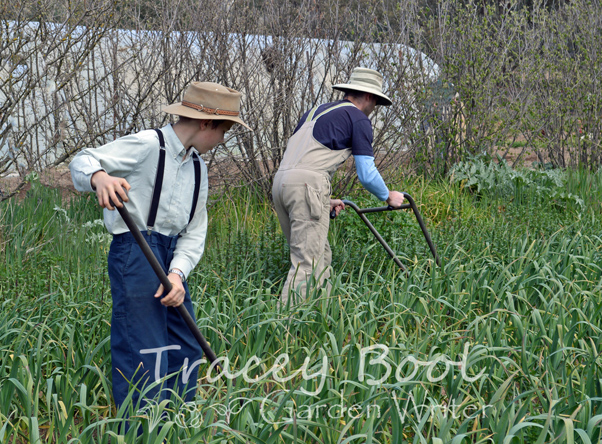|
Growing Garlic
(August 2016) Garlic is a must have in any kitchen garden, and I am confident you would struggle to find a more versatile and useful crop. You haven’t lived until you have savoured the life-changing punch of fresh, home grown garlic. A relatively simple crop to grow, garlic requires a well-drained, reliably moist and compost-rich soil with a neutral to slightly acid pH (Manutec pH testing kits are available at your local nursery or hardware store). Drainage can be improved by planting into raised beds. Make sure it’s a nice sunny spot which receives at least 4 hours sunlight. Bulbs should be purchased from a nursery or reputable online supplier such as Green Harvest, as store bought ones are usually sprayed with growth inhibitor and could also contain viruses. Planting can be carried out from March to early May. Separate bulb into cloves and plant pointy side up approximately 3-5cm deep and 10cm apart. Space rows around 20cm apart. You should fit around 50 cloves per square metre. An application of fertiliser tea around six weeks after foliage growth appears, and a couple of times during spring will help promote strong healthy plants. Avoid using nitrogenous fertilisers during last few months of development as it will encourage soft bulbs which won’t cure or store as well. Garlic is harvested around 7 to 8 months from planting when vegetative growth starts to brown off at the top of the bulb. This gives you plenty of time to use the delicately flavoured leaves as you would chives and spring onions in the meantime. Let the soil dry out for a couple of weeks before digging out, and leave it somewhere well ventilated and out of direct sunlight for a few weeks to cure. Foliage and roots can then be cut off, or if you are handy at tying knots and plaiting, you can secure multiple bulbs together to hang in doorways to repel evil spirits. No, not really, it actually keeps better in a cool dark cupboard with low humidity. |

